
Official June 2024
AQA
AS
PHYSICS
7407/1
Paper 1
Merged Question Paper + Mark Scheme + Insert
Ace your Mocks!!!
*JUN247407101*
IB/M/Jun24/G4001/E6 7407/1
For Examiner’s Use
Question Mark
1
2
3
4
5
6
TOTAL
Wednesday 15 May 2024 Morning Time allowed: 1 hour 30 minutes
Materials
For this paper you must have:
• a pencil and a ruler
• a scientific calculator
• a Data and Formulae Booklet
• a protractor.
Instructions
• Use black ink or black ball-point pen.
• Fill in the boxes at the top of this page.
• Answer all questions.
• You must answer the questions in the spaces provided. Do not write
outside the box around each page or on blank pages.
• If you need extra space for your answer(s), use the lined pages at the end of
this book. Write the question number against your answer(s).
• Do all rough work in this book. Cross through any work you do not want
to be marked.
• Show all your working.
Information
• The marks for questions are shown in brackets.
• The maximum mark for this paper is 70.
• You are expected to use a scientific calculator where appropriate.
• A Data and Formulae Booklet is provided as a loose insert.
Please write clearly in block capitals.
Centre number Candidate number
Surname
Forename(s)
Candidate signature
I declare this is my own work.
AS
PHYSICS
Paper 1
2
*02*
IB/M/Jun24/7407/1
Do not write
outside the Answer all questions in the spaces provided. box
0 1 An electron neutrino interacts with a chlorine-37 nucleus to produce an argon-37
nucleus and an electron.
The interaction is represented by the equation:
e
37 37 Cl Ar e 17 18 v +→ +
0 1 . 1 Explain, with reference to appropriate conservation laws, why the electron is emitted
in this interaction.
[2 marks]
0 1 . 2 Calculate the specific charge of the argon-37 nucleus.
[2 marks]
specific charge = C kg−1
3
*03*
Turn over ►
IB/M/Jun24/7407/1
Do not write
outside the
0 1 box . 3 In a different interaction, the argon-37 nucleus interacts with an electron.
Figure 1 represents the interaction of a quark in a baryon of the nucleus.
Figure 1
Deduce the exchange particle and the effect on the baryon.
Give one reason to support each answer.
[4 marks]
exchange particle
reason
effect on baryon
reason
Question 1 continues on the next page
4
*04*
IB/M/Jun24/7407/1
Do not write
outside the
0 1 box . 4 The argon-37 nucleus decays into a stable nucleus.
Describe the nature of the forces that act between nucleons and how these forces can
maintain nuclear stability.
In your answer, describe:
• the forces of repulsion and attraction that act between nucleons
• exchange particles associated with these forces
• the role of these forces in keeping the nucleus stable.
[6 marks]
5
*05*
Turn over ►
IB/M/Jun24/7407/1
Do not write
outside the
box
14
6
*06*
IB/M/Jun24/7407/1
Do not write
outside the
0 2 A tube box contains a vapour of mercury atoms at low pressure. In an experiment, the
vapour is bombarded by a beam of electrons.
An electron in the beam gains 6.7 eV of kinetic energy by moving through a potential
difference V.
0 2 . 1 Deduce V.
[1 mark]
V = V
The electron collides with a mercury atom. The atom subsequently emits a photon of
ultraviolet radiation with an energy of 6.7 eV.
0 2 . 2 Calculate the wavelength of the emitted photon of this ultraviolet radiation.
[3 marks]
wavelength = m
7
*07*
Turn over ►
IB/M/Jun24/7407/1
Do not write
outside the
0 2 box . 3 The experiment is repeated with a different gas.
Figure 2 shows the three lowest energy levels for an atom of the gas.
Figure 2
When an electron in the beam collides with the gas atom, 18.4 eV of energy is
transferred to the atom.
The atom subsequently emits a photon of visible light.
State and explain the energy transitions that are involved.
Support your answer with appropriate calculations.
[4 marks]
8
8
*08*
IB/M/Jun24/7407/1
Do not write
outside the
There are no questions printed on this page box
DO NOT WRITE ON THIS PAGE
ANSWER IN THE SPACES PROVIDED
9
*09*
Turn over ►
IB/M/Jun24/7407/1
Do not write
outside the
0 3 Figure 3 box shows a guitar with only one of its strings attached.
The string is fixed at X and Y.
The string is plucked and vibrates freely between X and Y.
The distance XY is 648 mm.
Figure 3
0 3 . 1 The frequency of the first harmonic is 147 Hz.
Calculate the speed of the wave travelling in the string.
[2 marks]
speed of wave = m s−1
0 3 . 2 The tension in the string is 71 N.
Calculate the mass of the string between X and Y.
[3 marks]
mass = kg
Question 3 continues on the next page
10
*10*
IB/M/Jun24/7407/1
Do not write
outside the
box The sound produced by the guitar is analysed.
The sound is the superposition of the first harmonic f1 with harmonics f2, f3, f4 and f5
of the stationary waves that exist on the string.
Figure 4 shows the frequencies of these harmonics and their relative amplitudes.
Figure 4
0 3 . 3 Draw, on Figure 5, the stationary wave that produces the harmonic f3.
Label the positions of all nodes N and all antinodes A.
[3 marks]
jordancarter 6 months ago
This study guide is clear, well-organized, and covers all the essential topics. The explanations are concise, making complex concepts easier to understand. It could benefit from more practice questions, but overall, it's a great resource for efficient studying. Highly recommend!
| Category | AQA PAPERS AND MARK SCHEME |
| Comments | 0 |
| Rating | |
| Sales | 2 |
Buy Our Plan




















